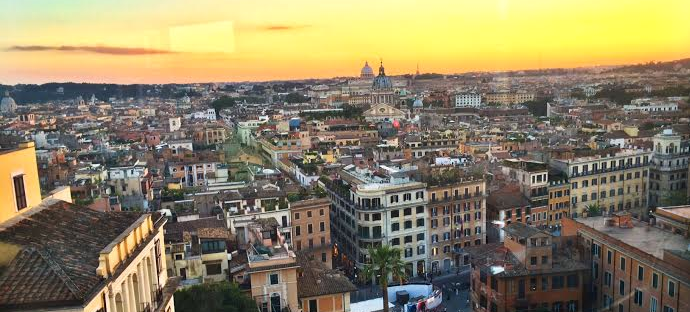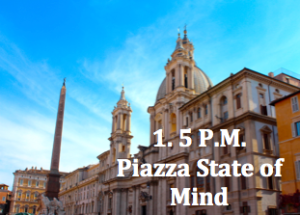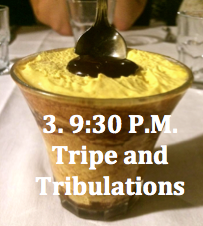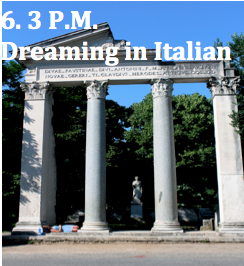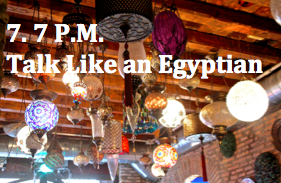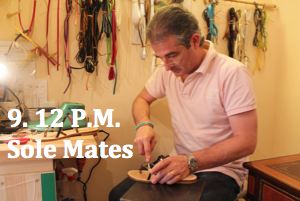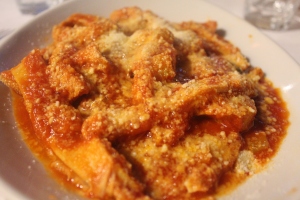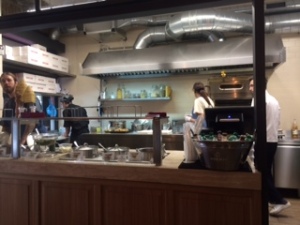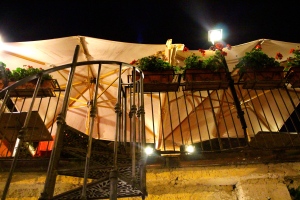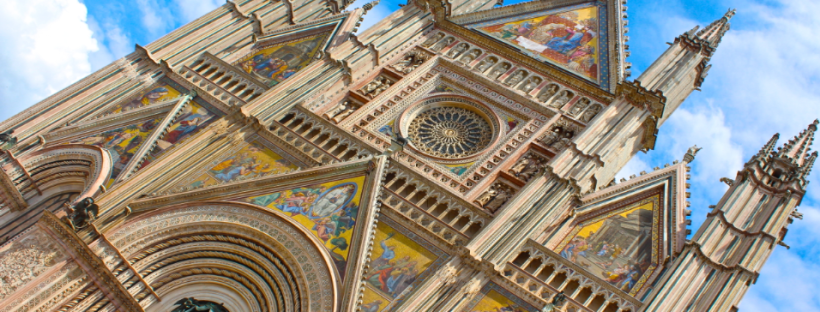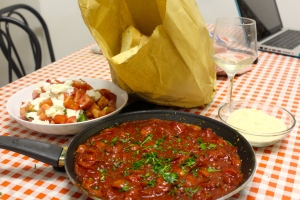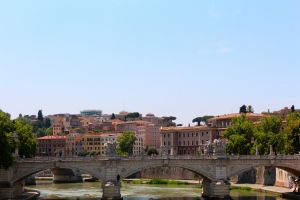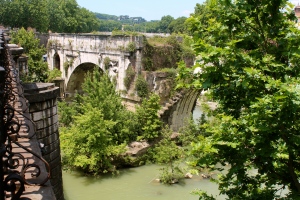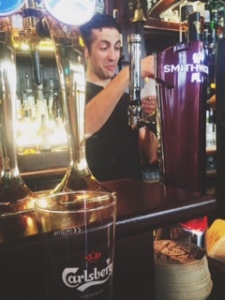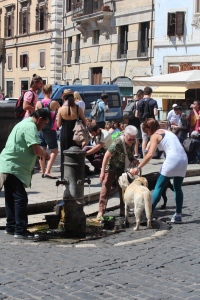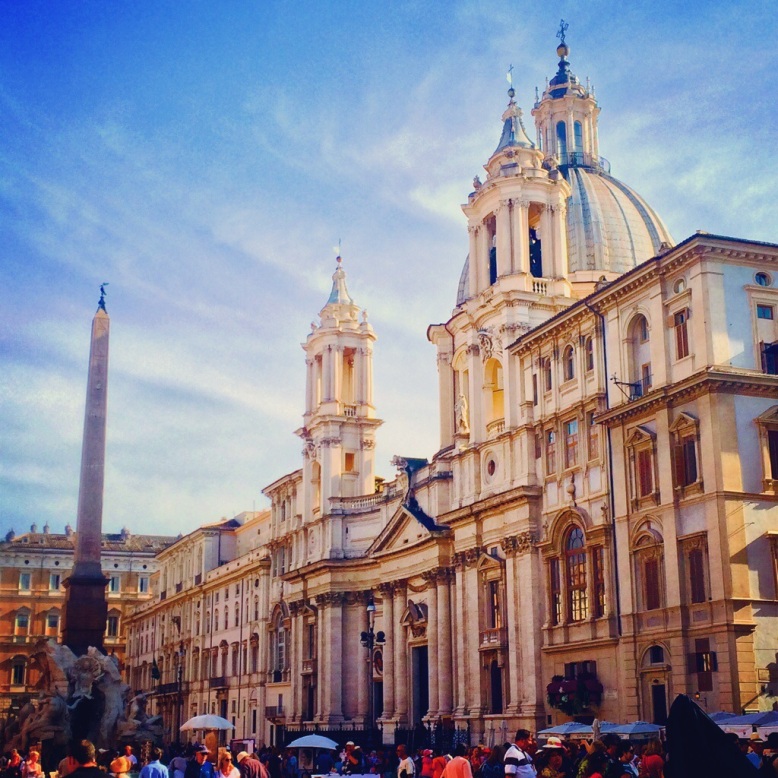The Italians got a lot of things right– cacio é pepe, gelato, fashion, architecture, etc.– but most importantly, the concept of (many thousand) thank-yous.
Every year poses new challenges, among which we often tend to dwell. I, for one, am partly to be held accountable: just the other day, I made a list of events that occurred this year that ruffled my feathers a little more than what I was comfortable with. Things I complained about. Things that irritated me. Things I threw many a fit over, both large and small.
However, in the spirit of (one of the best holidays ever!) Thanksgiving, it was more than time to flip my perspective.
The challenges that have surrounded my life this year? Yes, they’ve really sucked. But I’m thankful for each and every one of them because I know they’ve made me that much stronger of a person.
But as this is a #tbt, and I’ve also mentioned Italy, here’s a brief flashback to Rome accompanied by a brief compilation of the lezioni that have left traces of tricolore in everything I do.
1. Traveling unfolds life in a way that invites you to broaden your horizons.
It’s a thrilling game of lost and found in which you not only lose yourself, but you also find yourself, and you see yourself in a new way when you return home. As Pico Iyer wrote in “Why We Travel”, we indeed travel because the “it whirls you around and turns you upside down, and stands everything you took for granted on its head.” It takes two to tango, and I’ve gotta say, Rome, you were a splendid partner.
It has garnered me an appreciation for both the old and the new, the foreign and the familiar. Quite simply, the culture you experience from traveling adds color to your life. It is something that I will continue to pursue in my life wherever I go– even if it’s not across an ocean. You create your own adventure, and traveling showcases that ability.
2. Slow down and appreciate today.
Ferris Bueller was onto something when he said, “Life moves pretty fast. If you don’t stop to look around once and a while, you could miss it.” Whether it’s running a race, walking to class, or, hell, even finishing a day, there always an impetus of “getting shit done.” If I don’t complete what “needs” to be done, I feel incompetent.
We’re always rushing. We’re always in a hurry to get from point A to point B. We miss the bumps and twists and turns en route because we are too concentrated on getting to the destination, whatever or wherever it may be. And, furthermore, we will let out an audible UGH if there is that one bastard–er, obstacle– shuffling along at a glacial pace in front of us.
Enter Rome. Look forward, there’s the Pantheon. Look down, there’s an intricate network of cobblestones that would snag the heel of any Louboutin. Look left, there’s an immigrant trying to heckle you into buying a ticket to the Vatican museum. Look right, there’s a sunbaked cathedral inside of which the most wondrous ceiling awaits your eyes. Look behind you, and there’s a red vespa ready to zoom past you in 3…2… You get the picture.
The people in Rome aren’t sprinting to get to their destination. They welcome lateness, rather, as a customary old friend. Taking the time to invigorate yourself with the life around you is a lesson I learned every day. It teaches you to appreciate life with the same vim and vigor you get when the going is at its peak.
3. Whatever it is you do, put your heart & soul into it.
The classic comparison can be made between the American waiter and his Italian counterpart. If you’re in New York City, odds are he’s an aspiring actor trying to make it big on Broadway who’s part-time serving you a medium-rare filet mignon with a cabernet-fig demi-glacé. In Rome, however, it is his full-time passion and profession.
In my trip to the slaughterhouse district Testaccio, I chatted with many a chef, butcher and waiter, too, and each of them shared one commonality: they pour their hearts into their craft. The butcher selects only the most succulent cuts of meat and refuses to sell his customers any less than that. His customer in the stall two slots down buys from him to serve the finest form of cucina Romana to his hungry clientele on their way to work. And the waiters at the restaurant a few blocks over? Same deal.
Whether it’s the finest of fine dining or a neighborhood marble top pizzeria, the Italians are immensely proud of their heritage and customs cultivated from over 2000 years of tradition. Their passion is renowned, as is the quality of their work. They’re happy with what they do, and it’s also something to be said that they are even happier to share their joie de vivre with others.
It’s taught me to find my passion(s) and pursue them to the fullest.
4. Dress the part, dammit.
Although I pride myself in going to a university known for having fashionable students, it doesn’t even pale in comparison to Rome.
Rare is the Roman woman you will find navigating the streets dressed in Nike shorts, a spirit jersey emblazoned with her sorority’s letters, and gym shoes. Women in Italy have much respect for themselves, and it shows in the way they dress because they always carry themselves with effortless grace and poise.
Spending a month in Rome has taught me that even if I’m a disaster to pull myself together and slap on some red lipstick. If the confidence isn’t quite there, make it there.
5. Treat everyone like family.
Hospitality is not something only found in the South. The doors of each little patisserie and shoe store are always open, and you’re likely to find the owners outside chatting over a cigarette. Every stranger I passed en route always greeted me with “Buona sera”.
Mealtime was a sacred ritual that lasted a minimum of two hours because the restaurant’s staff were as flavorful as the piping hot food they served. They invited you into the embrace of their restaurant to laugh and converse and learn. They weren’t afraid to speak about the most controversial of topics and were genuinely interested in your take as well. It was as though they were a mother yearning to hear the details of her son’s first day of school.
Treat every day like Christmas (or Thanksgiving!), treat everyone like family. Share your passions every day, and learn with interest about others’ passions.
6. Embrace challenges and embrace change.
Even when everything in the world is going wrong, embrace it. If you don’t like it, change what you can change, even if “it” is your perspective.
It’s hard to find reasons to complain, especially when given an opportunity to gallivant around Rome for a month, yet, as with human nature, we do complain. Feet hurting too much from walking? Sweating? Politicians getting a little too rambunctious?
Sit down and order a cappuccino. Laugh at the sun and grab a gelato. Go for a run. Write. Have a conversation about it!
Rome taught me to be a relentless optimist–to strive to find la bella vita even when the going is not so bella. Every day, even in the most trying of times, there are always things to be thankful for, though they all tend to surface on the last Thursday of November. If you can’t find one event out of any given that brings you joy, dust off that magnifying glass and look harder.

